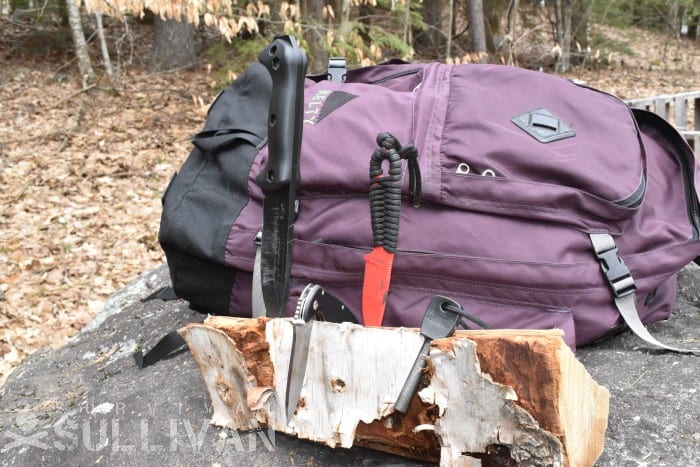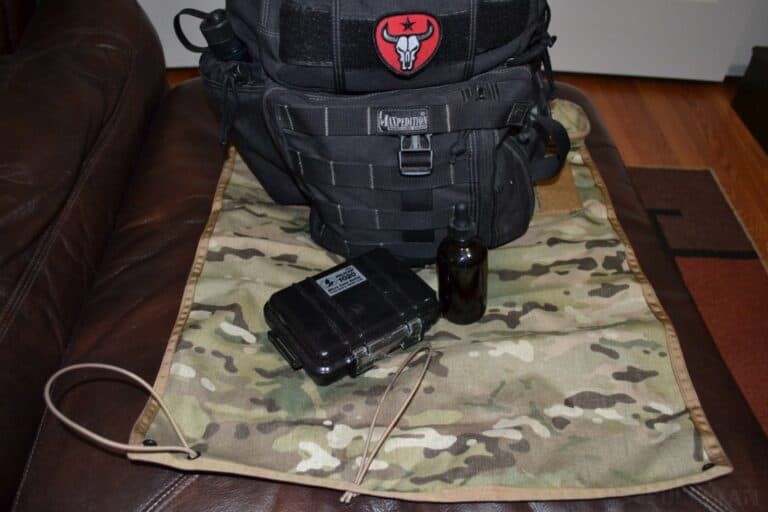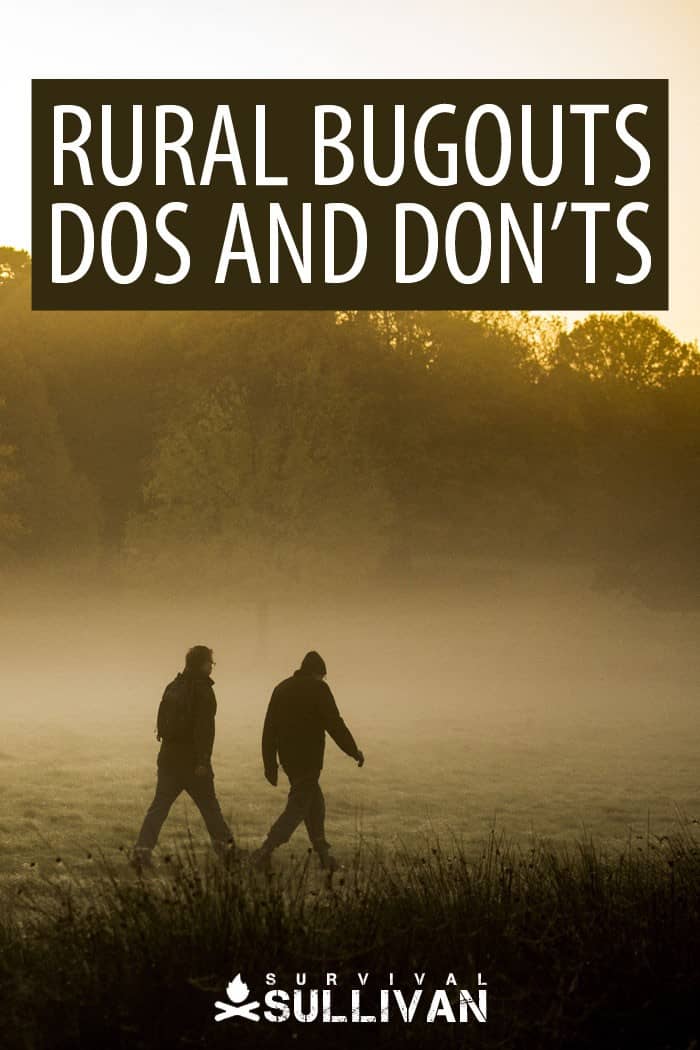Like any decision in survival, success is best not left to chance. Will you be lucky enough to have sufficient food? Placing access to clean and ample water in the hands of chance? What’s a little dehydration or amoebic dysentery between friends?
It is very doubtful that everything will snap into place when it hits the fan. Stacking the odds in your favor takes time and effort, but it is worth it. Even in the relative “ease” of surviving in rural lands, preparation is key.

While there are no hard and fast rules for survival, there are even fewer for bugouts. Rural bugouts are no different. Rural bugouts don’t have the same challenges as urban escapes. Rural escapes still have plenty of dos and don’ts that hedge success in your direction.
The following sections will look to stack the odds in your favor by steering you away from the Don’ts, and sin the direction of the Dos.
Do Have the Proper Mindset
It all starts with the proper mindset. You won’t last 3 seconds on a rural bugout without the proper mindset. A defeatist attitude ensures failure is a foregone conclusion.
Your bugout must start with a survival mindset. A rural bugout will be a marathon and not a sprint. Prepare in advance with mindset exercises. They will carry you through any challenges you may face.
Don’t be Reactionary
Count rural bugouts in miles, and measure them in challenges. Along your route, there will be more unknowns than knowns. Hitting the road with no plan and “adapting” to whatever comes only increases your chances of failure.
By definition, you are already one step behind when you are reacting. You must get out of the “Everything will be ok” mindset. It won’t. If you are always behind your situation cannot improve.
Ask yourself this simple question. Would you rather run from something or run towards something?
Do Have a Plan
The act of getting to your Bug Out Location (BOL) requires a complete set of triggers, rehearsed and familiar routes, and equipment. This is the gear necessary to get you there safely. Concerning planning, I again refer you to our resident experts.
Rural route planning is different from urban route planning. The distances are longer, but the threats are fewer. That makes for a debilitating combination. Your plan must allow for frequent breaks as you will be in a heightened state for much longer.
Your plan must also include alternate routes. For each alternate, account for the increased time and resources required. You may need to plan caches along your routes.
Plan for unacceptable levels of traffic on the trails. Have a plan component that takes you off-trail. Plan for swollen waterways that soak you to the bone, or require a significant detour.
Plan for travel to be slow and the trip to be long. Plan to have adequate food. Plan to take a rest day where you wash and dry your essential items. Pray for the best. Plan for the worst.
Create your plan. Review your plan. Refine your plan. Shoot holes in your plan. Then refine some more. Have a trusted friend do the same, and refine it some more.
Murphy will be lurking everywhere. The only way to beat him is to have a plan with contingencies for every scenario.
Do Commit to Your Bugout
The decision to bug in vs bugout has been the subject of infinite conversations. Some argue the various points, and never make a plan. Others take a firm stance on bugging in, sticking to their position to a fault.
The decision to bug out must be undertaken with focus, commitment, and sheer will (thanks, John Wick). Waffling on the bugout decision due to indecision will cause loss of time, and future doubt and insecurity.
The key to success is to establish a trigger for each event on the matrix. Once tripped, the trigger dictates it is time to go. Non-negotiable. Time to get out of dodge.
He who hesitates is lost. In a rural bugout hesitation can lead to more people on the trail, the risk of weather, or worse.
Look up any footage of last-minute travelers escaping any disaster. How many indecisive souls had to ride out Katrina on the highway? Don’t be indecisive. Go!
Don’t Over Estimate Your Ability to Cover Long Distances
Appalachian trail hikers plan on an average of 15 miles per day over the length of their journey. They start with 8-10 and have peaks of over 20-25 miles. Are you in peak shape? Is every member of your group in peak physical shape?
In an urban bugout, a sturdy set of sneakers or hikers will do. On the rural trail, you will be off-road and you will encounter few flat surfaces. Have you included fields, woods, streams, rivers, and swamps in your time estimates?
You will need a plan for obstructions rather than hiking down the road. Ever circle a swamp that’s 100 yards across but a mile wide? Ever cut through the center of a raspberry or grape thicket? Expect and prepare for this!
Lower your expectations for miles covered per day. It will be harder for you and your group than you know. What happens if your mileage is cut by 25% or 50%? Consider this as a reality and be ready for extra stops. Go so far as to plan extra caches.
Do Become Familiar with the Risks of Rural Travel
While there are fewer people in the country compared to the city, this can be as much as a liability as a benefit.
During a large bugout from an urban center the masses are escaping. Remember 9/11 and the Brooklyn Bridge? There is safety in numbers. You can hide in the crowd.
Rural bugouts will be the trip of the lonely. Only a few solo travelers or isolated families will be on the roads. Alone, the negative elements of society may target you.
You must be aware of your immediate surroundings, as well as everything within line of sight. Your situational awareness must extend in all directions. Seek out the signs, and pick up potential threats early.
You won’t be able to seek help, and must be your own first responder. Trauma medicine, maintenance medicine, and security all fall on your shoulders. Be ready for this.
Don’t Buy and BOB
Have you ever bought a water filter and immediately thrown it into your Bug Out Bag (BOB)? When you did that, did you give any thought to how to use it, its durability for the task, or if it even fit the need?
I once proudly bought a LifeStraw, tossed it in my BOB then hit the trail. At lunch, I stopped for tea. Don’t knock it. If you can make tea you can make a fire and cook. It’s a great exercise.
The issue was I had a water filter and no backup water. Mouthful by mouthful I filled my cup. LifeStraws are great tools, just not the right one for that situation.
Now imagine if I had to learn that lesson the hard way.
Too many preppers are gear hogs. They love acquiring stuff, yet avoid opening that shiny package. What if you get into a bugout only to find that the bivvy sack is too small? That brand-new stove won’t boil water when it’s below freezing?
Never set up your tent before? How do you expect to set it up in the dark, under stress?
Don’t get in the habit of buying gear and never using it. Success depends on knowing the capabilities of all your equipment.

Do Have the Right Equipment
Take an honest assessment of your threat matrix and your bugout plan. Now turn a critical eye to equipment. At the core, rural bugouts require gear that overlaps with urban bugouts.
They end up diverged at the end. Due to duration alone you will need extras above and beyond a simple urban bag.
Will your rural bugout necessitate cold-weather gear? How about rain gear? How will you manage fire? Does your plan allow a large fire?
Do you need a stove that provides light and smell discipline? How will you process wood? Will you have the opportunity to fish?
Ask yourself if you have the equipment to meet the needs of rural survival. Have you equipped yourself for shelter, water, food, communication, security, health, and sanitation?
Review your gear and don’t tolerate any gaps. Where possible, pack redundant items. More importantly, focus on gear that fits several purposes.
Do Make a Checklist
It is possible, even probable, that your bugout will come with little or no notice. As already stated, a rural bugout is measured in days. Forget something on a one-day escape from the city, and you’ll probably be fine. Ten days on the trail, missing items will cost you dearly.
Secure your future with a checklist. Write down both the items that are permanently stored in your BOB. Also, document items that need to be gathered before you head out the door. I fully recognize that money is limited.
I’d love to have a gun for every bag, that simply won’t happen. I have one bag carbine and I’ll have to make due. It’s ok to spread out your gear as long as you know what you need to have and where it is.
There is an additional benefit to your checklist. Maintenance of your BOB is significantly easier when you know what is supposed to be in it, whether it is during the seasonal review of your BOB’s contents, or as you are packing to get out of dodge.
Remove the stress of forgetting critical gear and go by your checklist. You can add or subtract gear based on the situation. But at least you will be doing it knowingly. Remember, you will be on your own for several days. You can’t afford to miss anything.
Don’t Neglect Navigation
Roads in the country-side are frequently laid out based on terrain. A passageway falls between the mountains, not over the top of one. Towns start along rivers and spread from there. People follow the path of least resistance.
Opposed to the grid of the cities, rural travel requires a map and compass. Navigation is not a natural skill. It requires study and practice.
Do you know how to read a map using magnetic north rather than true north? Do you know how many paces you take in 100 meters? Is that across flat ground, uphill, through brush? Can you box around that swamp and still end up on the correct heading as if you hadn’t had to detour?
Navigation is a perishable skill. If you’ve learned it, practice! If you haven’t, take a class. Most of all don’t neglect it.
Don’t Have Tunnel Vision – Do Look Ahead
Wide-open spaces equal threats from afar. If you aren’t looking for them, be assured they are looking for you. With all the stress and threats of a bugout, the last thing that you need is surprises.
Distances will vary in rural areas. I’ve been on wide open plains, valleys in rolling hills, and woods so thick you can’t find a trail that’s 10’ away. Take an assessment of the terrain you will travel, and gauge the ranges that you will need to surveil.
You will need to fight tunnel vision. Break the practice of focusing on the trail. Look around! You are, after all, extending your situational awareness as far as possible.
As you travel, recognize that the person on point will expend a lot of energy. It takes a great deal of mental and physical energy looking and listening for threats.
It cannot be done by one person alone. You must rotate. The on-point leads must be practiced at looking ahead and breaking their tunnel vision.
Do Be Prepared for Orthopedic Injuries
The ground you cover on a rural bugout will be a challenge on a good day and a nightmare on a bad one. Murphy will dictate that you will need to bugout on a bad day, and take a worse route.
Make sure that you have covered orthopedic injuries in your medical supplies. I’ve walked 2 miles with an improvised splint stick poking me where the sun don’t shine. It wasn’t fun. Not a single step of it. It was raining. I was blindfolded.
Finally, I was being led around by someone also in a splint. God I love GoRuck special events.
A few SAM splints and Coban wrap will go a long way to securing a twisted ankle or knee and keep you on the trail.
Don’t Use New Boots
Boots, like most other equipment, have a break-in period. New boots take more than a few miles to break in. That being said you don’t want to trust your bugout to tattered old boots.
Or worse yet sneakers. Again, one or two days on the urban trail with new boots won’t be too bad. Five or ten, now you are talking pain.
Invest in a backup pair of boots for the entire family. Break them in, and keep them in good repair. When not broken in they become blister factories. Bad enough for you, but intolerable for any little members of your party.
Do Respect Natural Forces
Mother Nature brings us the best of days. 70 degrees F (21 C), low humidity, lots of sunshine. If Mother Nature’s anger turns against us then she can kill. Don’t underestimate her moods and prepare for all her moods.
Too many hikers have ignored the signs, and paid the price. Sunny at the bottom of the hill. Deadly at the top. They get stuck and someone has to rescue them.
Not only must you prepare for the cold, but you must prepare for the heat. Heat exhaustion will take you out of the game as quickly as hypothermia. Keep track of when it is changing to either cold or hot.
Finally, be wary of water. A slow stream can take you off your feet just as easy as fast water. It’s a matter of force not speed.
Frigid waters amplify the situation and drop your core temperature before you realize what is happening. At our off-grid retreat, the local creek brings water down from the mountains.
That coupled with a few local springs and in the heat of July, the water still hovers just above 50 degrees F. Nice to cool off in, dangerous to get stuck in.
Give Mother Nature the respect she deserves!
Don’t Discount Mr. Murphy
Ok, I’ll admit it, this isn’t directly rural related. Murphy is everywhere and he never rests. No plan survives first contact with the enemy. With your first footstep out the door, he hunts you!
Murphy can take many forms. A sprained ankle. Loose BOB straps. A broken shoelace. He points local bad men your way and coaxes Mother Nature to make it rain. Then sleet. Then snow.
Keep all of this foremost in your thoughts. While you hone your mindset, create your plan, and pick your gear. Think of him as you look ahead and look down to place your feet.
Whether you chose to accept it or not he will always be with your party and always looking over your shoulder. Use your persistence, your contingency plans, and your BOB to keep him at bay.
Wrap-up
Mr. Murphy aside, rural bugouts are loaded with challenges. They start long before the ‘S’ hits the fan. You will be challenged in creating your mindset and your plan. You will be challenged to get all your gear into your BOB, and still be able to carry it.
By prioritizing your activities on the rules of survival you can hedge your best in your favor. If the rural bugout does not apply to you, use these lessons to hone your plan. If it does, then God speed, my friend. Move with determination and diligence, and I’ll see you on the other side.


My passion is empowering people with the knowledge to prepare for personal, local, and regional emergencies. I went to school for engineering and computer science and spend my days in the security industry.

Trespassing on private property will not end well especially during a SHTF situation. I live on 12 acres in the north GA mtns and the urbanites and suburbanites think that the entire National Forest is public property. If city people think they can bug out to the country and be welcomed with open arms by the locals then they will have a rude awaking coming and will have a very short bug out experience. They will not wanted nor tolerated so they had better know exactly where public lands i.e. WMAs, WAs begin and end.
Thank you for that article. I fear that many people discount many of the factors listed here. They also underestimate the sheer volume of daily work necessary to survive in a rural BOL. That’s another article. Thanks again!!!
I keep reading how city people won’t be welcome in the country. Do rural residents assume everybody in the city is a moron? It would be just as dumb for people in the country to hike to the city and expect a welcoming committee. Although I also doubt there will be a city group waiting to turn back outsiders. Everyone will too busy dealing with their own survival.
Nobody, no matter who you are or where you live or where you go to, should expect help or assistance or free resources. I believe most people will simply do what they can, go where they can and function as best they can within the current social, political or financial situation.
Realistically, I don’t see people outside of towns being able to control or block off the country side. And like it or not, they might be able to produce supplies, but they’ll need customers and they’ll need things from built up and developed areas such as towns, cities and suburban areas. Nobody can isolate themselves and their location and think they’ve “got it all”.
Anyway, good article and topic. Survival should not really be broken down into urban or rural. Like you indirectly suggest, we should be flexible when creating a survival kit and when choosing skills to learn.